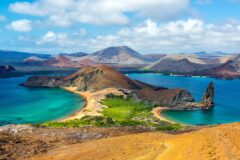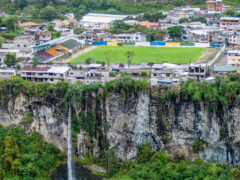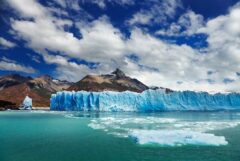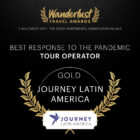Just Back From: Essential Guyana travel guide with St Lucia
Carrie Gallagher - Travel Expert
Our travel expert Carrie recently returned from Guyana and St Lucia. She shares her experiences, alongside our comprehensive destination guide, including key highlights and tips. Read on to find out more.
Picture this: you’re cycling through a wild savannah when suddenly, a giant anteater appears. The next day, you’re flying over the world’s most powerful single-drop waterfall, watching 226m of thundering water disappear into the jungle below. Fast-forward a week, and you’re sipping rum punch on a Caribbean beach, the adventure of a lifetime settling into blissful memory.
This is the magic of combining Guyana and St Lucia – South America’s last frontier, partnered with a Caribbean paradise. It’s a journey that takes you from the edge of civilisation to the height of luxury, all connected by a single flight route that makes this spectacular pairing surprisingly accessible.
Why you should choose this combination
British Airways now operates direct flights from London to Georgetown, touching down in St Lucia both ways. Whether you start with Caribbean beaches or plunge straight into South American adventure, this routing transforms two distinctly different experiences into one seamless journey.
More importantly, these destinations complement each other beautifully. Guyana challenges you with authentic wilderness experiences that lead to encounters with giant otters and Amerindian communities. St Lucia rewards you with luxury resorts, gourmet dining, and Caribbean hospitality.
Visit Guyana: South America’s biggest secret
The last English-speaking frontier
Tucked between Venezuela, Brazil, and Suriname lies a country most people couldn’t find on a map. Guyana – the only English-speaking country in South America – remains one of the continent’s most authentic destinations.
Georgetown, Guyana’s capital, sprawls along the coco-coloured Demerara River like a faded colonial dream. Wooden houses on stilts lean against each other in friendly chaos, while the red-roofed Stabroek Market buzzes with vendors selling everything from fresh fruit to hot peppers that could strip paint. The city’s British colonial architecture tells stories of its time as British Guiana, but step into the streets and you’ll hear Guyanese Creole mixing with Hindi, Chinese, and indigenous languages.
Most visitors treat Georgetown as a gateway, but spend at least a day here. The Botanical Gardens provide green respite from the heat, while the city’s surprising culinary scene offers your first taste of what makes Guyanese cuisine so special. Chow down on tender beef pepperpot made from caramelised cassava juice, or doubles – soft, fried bread filled with curried chickpeas.
Into the interior: Where your South American adventure begins
The real Guyana lies beyond the coastal strip, in an interior that covers 85% of the country yet hosts fewer people than a mid-sized British town. This is where the Amazon rainforest meets rolling savannah, where rivers run chocolate-brown with sediment and the only sounds are bird calls and rushing water.
Getting there requires commitment. Trans Guyana Airways and Air Services Ltd operate domestic flights to grass airstrips that appear suddenly in vast green landscapes. Expect small planes and basic facilities. But for those with a sense of adventure, these limitations become part of the appeal.
The Rupununi region, a vast savannah that stretches toward Brazil, offers some of South America’s best wildlife viewing. Giant anteaters lumber across grasslands, while giant otters play in remote rivers. Caiman House, a conservation project run by local communities, combines comfortable accommodation with genuine conservation work – guests often help with research projects while spotting caimans by moonlight.
Awe-inspiring Kaieteur Falls
Every visitor to Guyana makes the pilgrimage to Kaieteur Falls, and for good reason. This is the world’s largest single-drop waterfall by volume, where the Potaro River plunges 226m into a gorge so remote that it wasn’t officially discovered until 1870. Most visitors see it on day trips from Georgetown – a scenic flight over endless rainforest canopy followed by hiking to viewpoints that put you at eye level with one of nature’s most powerful displays.
Standing at the viewing platform, feeling the spray on your face while rainbow mists rise from the gorge, you understand why this place is sacred to indigenous communities. Kaieteur National Park protects not just the falls but an entire ecosystem where cock-of-the-rock birds nest and golden rocket frogs live nowhere else on earth.
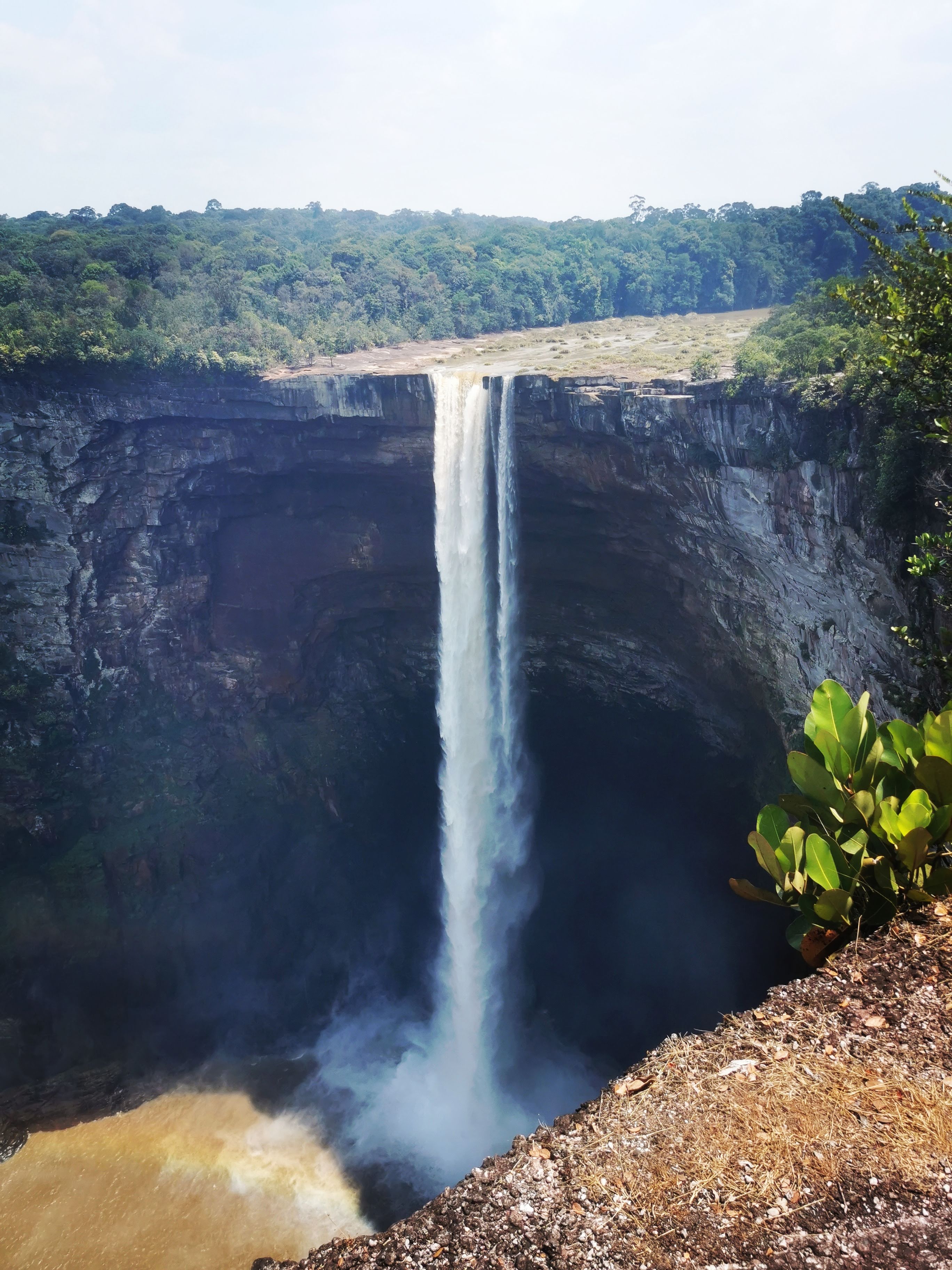
Iwokrama: Rainforest research in action
The Iwokrama rainforest, roughly the size of Yorkshire, represents one of South America’s most successful conservation stories. This research station and eco-lodge combination offers visitors a chance to experience pristine rainforest while contributing to genuine scientific work.
The canopy walkway – a series of suspension bridges 30m above the forest floor means you gain a different perspective of nature from above. Dawn walks reveal troops of red howler monkeys calling across the canopy, while night tours spotlight kinkajous and possums going about their nocturnal business.
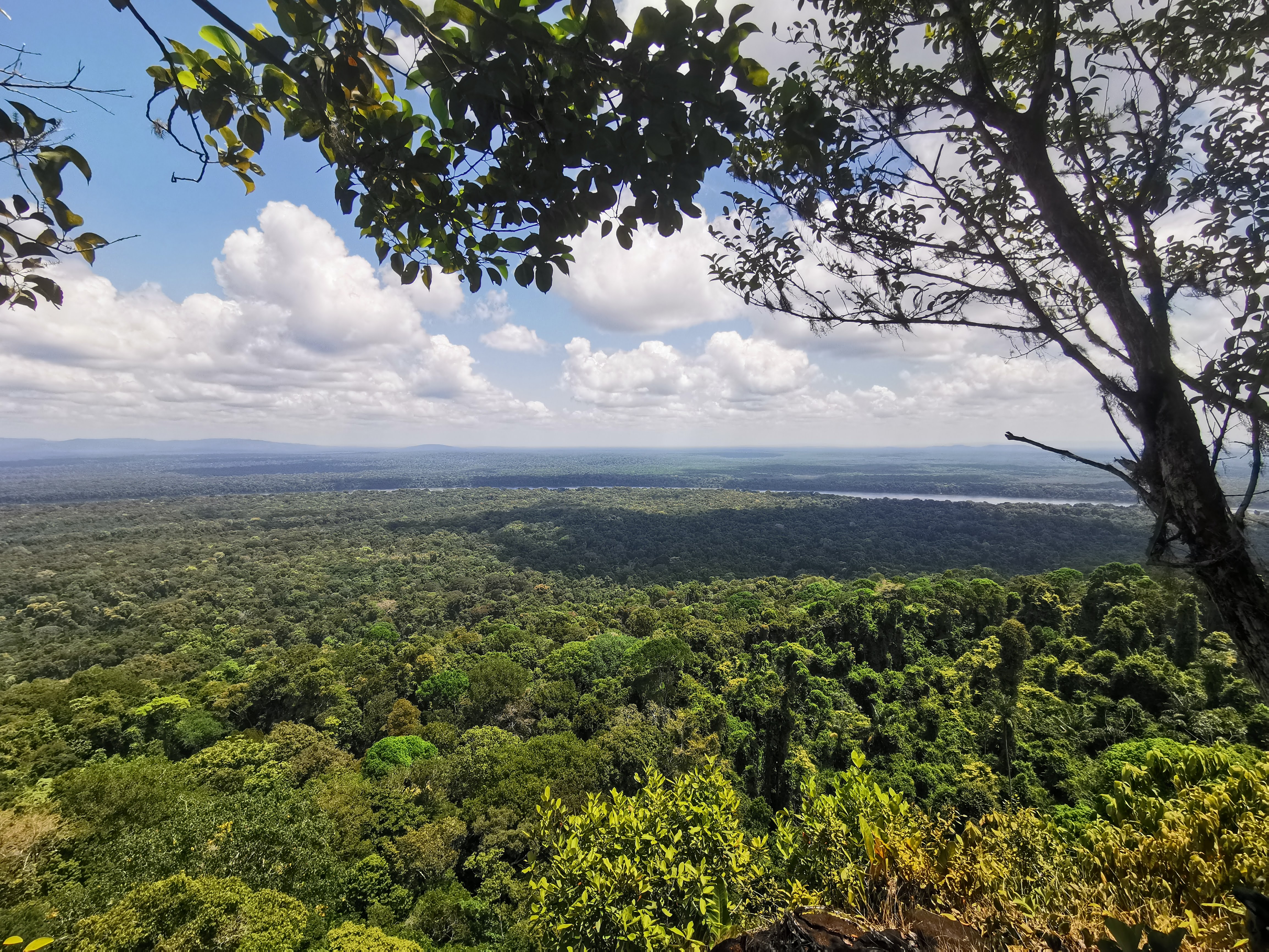
Guyanese culture: A unique blend
What makes Guyana fascinating isn’t just its wildlife – it’s the people. This former British colony developed a culture unlike anywhere else in South America. The population blends indigenous Amerindian peoples with African descendants, Indian workers, Chinese immigrants, and Portuguese settlers. The result is a society where Hindu temples neighbour Christian churches, where curry and rice appear alongside African-influenced stews.
This cultural mixing created a cuisine that surprises everyone. Cook up rice – a one-pot meal combining rice, beans, coconut milk, and whatever protein is available – appears on every table. The East Indian influence shows in excellent curries and rotis, while Chinese migration contributed stir-fries and fried rice to the local favourites.
When to go and what to expect
Guyana’s location means it’s hot and humid year-round, with temperatures rarely dropping below 24°C or rising above 32°C. The rainy season occurs twice – May to August and November to January – but even then, rainfall can be unpredictable. The wettest months, from mid-November through mid-January, can make interior travel challenging, while mid-July often brings a brief dry spell even during the wet season.
Most visitors find March through August ideal, when organised tours run most smoothly and longer trips into the interior are most comfortable. However, don’t let rain fears deter you – the wet season brings lush landscapes, spectacular waterfalls, and fewer tourists.
St Lucia: For chilled-out bliss
After a week of adventure in Guyana, St Lucia is the perfect ending. This Caribbean island offers powder-white sands, turquoise waters and swaying palms. From lying on the beach to joining in with a street festival, hiking nature trails or tasting Creole mouthwatering dishes, you do as little or as much as you want.
Island adventures and natural wonders
St Lucia brings Caribbean sophistication with dramatic natural beauty. The island’s twin Pitons rise from the sea like ancient sentinels, creating one of the Caribbean’s most photographed landscapes and a UNESCO World Heritage site that rivals any natural wonder.
The aerial tramway at Rainforest Sky Rides offers a leisurely rainforest experience. Gliding silently through the canopy in enclosed gondolas, you’ll spot tropical birds and exotic plants while enjoying commentary about the island’s ecology.
For those craving a rush of adrenaline, St Lucia delivers. Zip-lining through the forest canopy provides pure adrenaline, while the island’s reef systems offer world-class diving and snorkelling. Hiking trails wind through lush interior valleys to hidden waterfalls where you can swim beneath cascading water in crystal-clear pools.
It’s Friday night!
The fishing village of Gros Islet transforms every Friday night into one of the Caribbean’s most authentic street parties. The Friday Night Street Party pulses with energy as steel drums echo off colonial buildings while vendors serve fresh seafood and cold Piton beer. Local families mingle with tourists. The atmosphere is electric and welcoming.
Island sophistication
Local markets in Castries offer tropical fruits and spices with Caribbean preparations that delight the palate. Restaurants serve everything from fresh seafood to international cuisine, often with views that make dining feel like a special event. The island’s rum distilleries offer tastings that provide perfect endings to adventurous days.
The beaches deserve a special mention. Reduit Beach stretches for miles of bone-white sand, while secluded coves offer private swimming in crystal-clear waters. Each beach has its own character – from the dramatic black sand of Jalousie Beach beneath the Pitons to the pristine white sands of Marigot Bay, where calm waters reflect luxury yachts and tropical hillsides.
Journey Latin America’s expert insight
Journey Latin America’s travel expert, Carrie, recently completed this spectacular two-week journey, combining South America’s wildest frontier with a Caribbean paradise. She shares her favourite moments.
Getting there and first impressions
How did you get there?
There is now a direct BA flight from London to Georgetown in Guyana. It touches down briefly in Saint Lucia in both directions, making it easy to add this Caribbean paradise to your holiday. It’s definitely worth doing – as the contrasts of both destinations really make it feel like you’ve had two very different experiences.
What did you see and do in Guyana?
I flew into Georgetown, which I found to be a fascinating city, full of so many different influences. Unfortunately, I didn’t get to spend long there, as I spent most of my time in the interior of the country – a fantastic mixture of savannah and rainforest. I was also lucky enough to travel from Georgetown on a day trip to spectacular Kaieteur Falls. It was such an incredible experience seeing the sheer force of this breathtaking natural wonder. I definitely recommend that everyone who comes to Guyana visits Kaieteur.
Was it your first time in Guyana?
Yes, and what a first experience. I am lucky that the three Guianas are the only countries in Latin America that I haven’t visited. So I was so excited to finally travel to one of them. It definitely felt very different to the rest of South America! It was also my first time in Saint Lucia, too, so it was great to be able to combine the two.
Highlights and recommendations
Can you pick out some of your favourites from your trip?
Place: A tough choice, as I liked all of them! Iwokrama rainforest in the centre of Guyana is beautiful, and we saw so much wildlife, including lots of different birds and river otters. I have to mention Kaieteur Falls again. Its remote and spectacular setting is something that’ll stay with me forever.
Hotel: I loved Atta Lodge in the Iwokrama rainforest, since it was so close to the canopy walkway, and also Waikin Ranch in the savannah. Anse Chastanet – a super luxurious eco resort in Saint Lucia was a wonderful place to end the trip. I felt spoiled and well looked after there.
Excursion: Coming across giant anteaters while we were cycling through the savannah was definitely a highlight, but then again, Guyana is one of the best places in the world to see them.
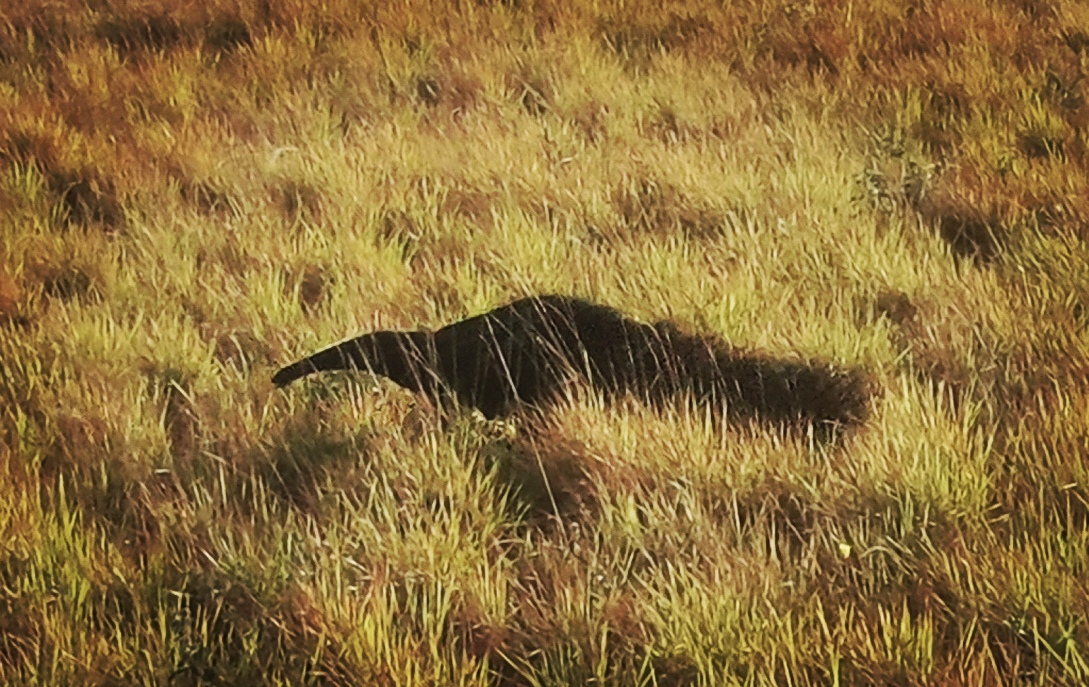
What was your most memorable moment?
Flying over Kaiteur Falls and getting a bird’s eye view of the spectacular drop. It was such a special hold-your-breath moment.
Surprises and local culture
Were there any surprises along the way?
The biggest surprise for me was the food – it was absolutely delicious everywhere we went. Guyana is a real melting pot of cultures, and its cuisine really reflects this. Their national dish pepperpot (a stewed meat dish) is one of the tastiest meals I’ve ever eaten.
Any restaurant recommendations?
We ate in the lodges when we were in the interior, but in Georgetown, we did a market tour with chef Delven Adams, who then prepared a delicious lunch for us at his restaurant, the Backyard Café – thoroughly recommended. Chef personalises and tailors the menu to his customers and what they like to eat. It’s such a great experience.
Practical advice
What tips do you have for travellers wanting to visit Guyana
Guyana is one of those destinations that most travellers don’t get to experience. It’s still pristine and undeveloped, and untouched by tourists. Most of our journeys were on unsealed roads and all the lodges we stayed in were basic and simple.
However, for people with a sense of adventure who like to get off the beaten track and don’t mind forgoing a few creature comforts, it’s an absolutely spectacular destination. Guyana is rich in nature, wildlife and culture. Staying at the lodges was a wonderful experience as many of them have been in the same family for generations. We met some wonderful local people, who told us the most entertaining stories. Plus, being able to combine it with a relaxing few days in Saint Lucia at the end is a real bonus, too.
Any packing tips?
Guyana’s climate is hot and humid, so you need to be prepared for warm weather. I travelled very light, with lots of loose layers, due to the number of small planes I’d be taking. I wouldn’t advise bringing a huge suitcase.
Final thoughts
Sum up your trip in a sentence?
It was a spectacular journey full of highlights with incredible wildlife and wonderful characters.
Frequently asked questions
How do I get to Guyana? British Airways operates direct flights from London to Georgetown via St Lucia, making this combination incredibly straightforward. The flight touches down in both directions, allowing flexible itinerary planning.
Do I need visas? UK citizens receive free visas on arrival, valid for 30 days, with one-month extensions available for longer trips. Most countries have similar arrangements, though check current requirements before travel.
What about domestic flights within Guyana? Trans Guyana Airways and Air Services Ltd operate domestic routes to interior destinations. Book early as aircraft are small and capacity is limited. Expect basic airstrips and flexible scheduling.
What vaccinations are required? Yellow fever vaccination is mandatory for Guyana entry. Consult a travel clinic about malaria prophylaxis for interior regions, plus routine vaccines. Some areas require yellow fever certificates from other travellers, too.
How safe is travel in Guyana? Like most countries, common sense and organised tours minimise potential risks. The biggest challenges are logistical rather than safety-related – remote locations mean medical facilities are limited.
Should I worry about malaria? Malaria remains present in interior regions, but proper treatment and insect repellent provide excellent protection. Most visitors experience no health issues with reasonable precautions.
How long should I spend in each destination? A long journey to reach Guyana deserves at least a week there, with 4-5 days minimum in St Lucia. Two weeks total allows proper exploration of both destinations without feeling rushed.
When is the best time to visit? March through August generally offers the driest weather in Guyana, though any time works with proper preparation. The rainy season occurs from May-August and November-January.
Should I book tours in advance? Yes, especially for Guyana. Limited infrastructure means tour operators have small capacity, and the best lodges book up months ahead. St Lucia offers more flexibility.
What should I pack? Pack light due to domestic flight weight restrictions. Essential items include insect repellent, sun protection, comfortable walking shoes, and quick-dry clothing. Leave the large suitcase at home.
How much cash should I bring? The Guyanese dollar is local currency, but US dollars work everywhere. Credit card acceptance is limited outside Georgetown, so bring sufficient cash for interior travel.
What about communication? Mobile coverage is limited in Guyana’s interior. Some lodges have satellite internet, but expect to disconnect from digital life during wilderness portions of your journey.
How developed is the tourism infrastructure? Guyana’s tourism infrastructure is deliberately undeveloped – that’s part of the appeal. Expect basic facilities, limited electricity, and accommodation that prioritises authenticity over luxury. St Lucia provides full resort amenities.
A tale of two destinations
Guyana represents something increasingly rare in modern travel: a destination where tourism hasn’t transformed it. This South American country offers authentic encounters with indigenous communities, wildlife viewing on nature’s terms, and landscapes that remain virtually untouched. Combined with St Lucia’s polished Caribbean luxury, you experience the full spectrum of travel.
Tailor-made holidays
Flexible, custom-made holidays to Latin America created to match your exact requirements: our tailor-made itineraries are as unique as the clients for whom they are designed.
Design my tripPapagaio
Your edit for Latin American inspiration
Our exciting range of articles on Latin America explore everything from iconic destinations and lesser-known cultural gems to delicious traditional recipes. You’ll also find exclusive travel tips, first-hand client reviews and the chance to get your personal questions answered by our travel experts.
View Extraordinary Inspiration